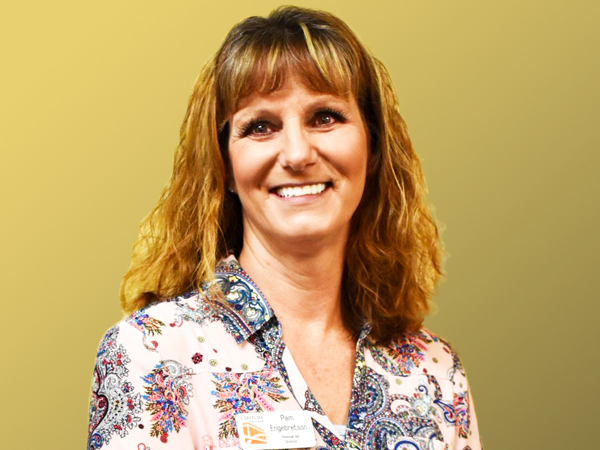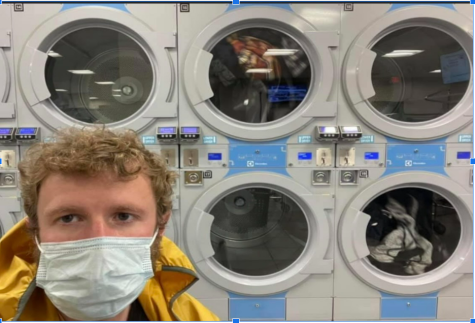Q&A with Pam Engebretson: Weeding through the Facts and Myths of Financial Aid

President Biden has extended the federal student loan forbearance enacted by the Trump administration to September 30, 2021. This forbearance means that there is a repayment pause on student loans with no interest or penalty. Each month of this forbearance will also count toward loan forgiveness for borrowers in public service jobs. This is part of a student loan rehabilitation program that erases a default from a person’s credit report after nine consecutive on time payments.
Unfortunately, this does not extend to students who borrowed from private companies or universities. Collections will also be halted on defaulted federally held loans. Garnishments will also be paused and refunded back to borrowers. It remains to be seen if any forbearance will be extended to these borrowers.
I spoke with Pam Engebretson, the head of financial aid at Century College about federal financial aid policies and upcoming changes.
Sherri Kittelson: Has a nationwide student loan forbearance been enacted in the past? If so, when?
Pam Engebretson: Not that I am aware of in my 30 plus years of higher education financial aid.
SK: What happens to loan payments when students send them in?
PE: Money is [as] borrowed student loan funds come from the US Treasury, so when students repay their loans, the payments go back to the US Treasury.
SK: What is the Student Loan Rehabilitation program?
PE: This is a 50-year-old program that erases a student loan default from a credit report after nine months of consecutive on-time payments. The borrower and loan servicer agree to the payment arrangement and after nine months of on-time payments, the borrower’s loan status is moved to ‘good standing.’
Let’s Talk About Loan Repayment
PE: If students are enrolled at least half-time status (6 credits) they are considered “in-school” and are not required to make payments on their federal student loans. Six months after graduation or attendance stops, students enter their six-month grace period as they transition into the repayment phase of their federal student loans. The student must begin making payments.
If a student does not make any payments for about a year that loan will move into a defaulted loan status. This default will show up on a [their] credit report. Students cannot receive financial aid if they have defaulted on their student loan repayment obligations.
The borrower must make six consecutive monthly payments or make a payment arrangement to be eligible for financial aid and have the default removed from their credit report. After nine months of consecutive payments the default is removed, and the loan is once again considered in good status. The borrower is once again eligible for federal financial aid.
SK: I understand the Biden administration is considering an income-based repayment program?
PE: Income based repayment has been around for years and available to all borrowers.
Borrowers supply income information to their loan servicer. Soon, obtaining income information will get easier because there will be more data sharing between the IRS and the US Department of Education. Students can make smaller payments based on the amount of their disposable income. A formula is used to decide what a borrower’s disposable income is. For income-based repayment plans, students can make smaller payments compared to a standard repayment plan (10 years of the same repayment amount). Also, their payments can be stretched out 15 to 25 years.
SK: Why is the news media treating these repayment plans like a new thing?
PE: What I have heard is that they are lowering the amount of disposable income that the payments are being calculated from. Payments used to be calculated from 25% of disposable income and they’re trying to move the percentage down to 10% to 15% of disposable income. I’m not hundred percent sure of the amounts being used to calculate that.
SK: What’s your view on loan forgiveness?
PE: There’s always been a public service loan forgiveness program. There are tiny pockets of populations of careers that have had forgiveness programs available in the past, but not a blanket “we are just not going to have you repay X thousands of dollars of your student loans. We are just going to write them off.” There’s never been anything like that.
The tidbits I hear is that there’s pushback in Congress about whether loan forgiveness is going to happen. They are supportive about students obtaining their education. There’s less support for forgiving and wiping out student loans across the nation. To be honest with you, it’s an affordability issue.
Starting next fall (2021) there’s going to be an annual student loan acknowledgment that students will have to certify. Every year going forward students will have to go to the Department of Education website and confirm this is how much money I have borrowed to date. There are too many students who continue to borrow money but have no idea how much money they have borrowed because they only sign one promissory note. It’s easy to say, “I’m going to borrow $3000, $5000 or $7000.” Students are unaware that they are continuing to take out student loans and the amounts can add up quickly.
SK: Is there any kind of seminar or education process that you go through with students?
Entrance counseling is designed to help students understand key financial terminology related to loans. For example, entrance counseling will explain the difference between repayment and deferment. Students learn other terms like in school status and grace period.
Budgets are also discussed in entrance counseling. This helps students decide how much of a student loan they might need. They are shown what repayment looks like and develop an understanding of the rules of the repayment program. This is required by the federal government before students receive their first student loan disbursement.
PE: Currently there are two requirements in the student loan process and soon there will be a third requirement of the annual student loan acknowledgment that I mentioned. When students take out a student loan, they must complete entrance counseling to review their rights and responsibilities, a master promissory note which is the legal document where students promise to repay the money and soon the annual student loan acknowledgement.
SK: Are the advantages of making loan payments early (before grace period ends) discussed?
PE: I do believe that is covered during entrance counseling.
SK: When a student defaults on a student loan does that ever come back on the institution they defaulted with?
PE: Yes, every school has a default rate of which student loan borrowers are repaying their loans and which student loan borrowers are not repaying their loans. Default rates are calculated by the federal government. When an institution has hit a certain threshold there are consequences for that institution.
There has been talk on the federal level for holding schools accountable for the default rate of shared responsibility. That raises concern for community colleges that serve low-income students. The low-income students are less likely to complete their education. They are more likely to take out student loans. They are more likely to attend a local community college which is a low-cost institution and may not be able to secure a well-paying job and can repay their loans successfully. We are not a wealthy institution. We do the best we can with the funding that we get from the state of Minnesota to supply quality education and quality settings.
PE: Individual institutions with default rates of 30% or higher for three consecutive years, or greater than 40% for one year — or both — are subject to sanctions, including a loss of eligibility for one or more federal student aid programs. Under the new data, 15 institutions (13 proprietary schools, one public, and one private institution) are subject to sanctions, unless they successfully appeal to the Department of Education.
SK: There has been talk of making associate of arts degrees free of charge. Do you think that would affect quality overall?
PE: I don’t think so. I think it would help community colleges. What this would have the potential to do is create more stable enrollment, so that it’s easier to plan a budget. The information that I’m hearing out of Washington right now is chatter. There’s no action or legislation. It’s way too early in the Biden administration. What they are looking at is increasing the amount of Pell Grants.
SK: Just to clarify, Pell Grants are for those who have yet to obtain a four-year degree, and they are not degree specific?
PE: That’s correct. Pell Grants are designed to support students from more lower income households.
SK: Do you think those thresholds will be lowered to qualify students for Pell Grants?
PE: What I have heard is that in addition to increasing the amount of the Pell Grants, they’re also increasing the eligibility factor for Pell Grants. More middle-income families would be eligible for Pell Grants.
SK: Do you know if the loan forgiveness program would be expanded to people outside of public service?
PE: It’s my understanding that the program they’re talking about to forgive $2,000, $5,000, $10,000, $50,000 in student loans (I hear all kinds of numbers) would be across the board; it would not be tied to careers.
SK: Do students, colleges, universities, and trade schools have any influence on federal student loan legislation?
PE: Colleges have little influence. We are part of a national organization of financial aid administrators, (NASFAA https://www.nasfaa.org/ ), that the US government leans on heavily to better understand the impact of potential financial aid legislation. Students can contact their Senators and Representatives in Washington to try to influence federal legislation.
PE: Remember when I talked about the IRS and the US Department of Education having a closer working relationship since the pandemic? This is part of the stimulus plan passed after Christmas of 2020.
Because of the working relationship between those two government entities, starting in 2023-2024, students applying for financial aid will no longer need their tax information from two to three years ago for their application. The student will only need to supply their Social Security number. The information goes directly from the IRS to the US Department of Education, and they will decide at once what the student is eligible for. That’s pretty exciting.
SK: Do you have any tips for students about their student loans?
PE: Make as large of payment as you can right now to lower your principal amount. This will reduce the interest you have to pay and allow you to pay the loan off more quickly.







